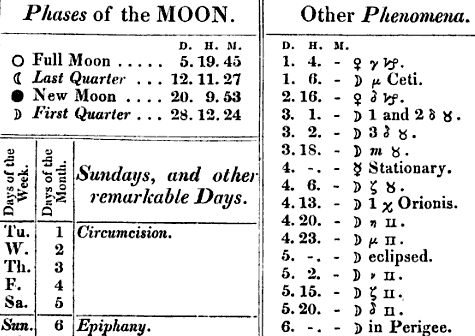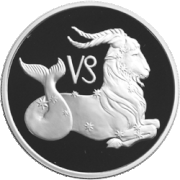♑
Appearance
| Text style | Emoji style | |||||||
|---|---|---|---|---|---|---|---|---|
 |

| |||||||
| ♑︎ | ♑️ | |||||||
| Text style is forced with ⟨︎⟩ and emoji style with ⟨️⟩. | ||||||||
| ||||||||

Translingual
[edit]Alternative forms
[edit]This is the most variable of the signs. It may look like a V connected to an ʃ shape (see box at right), like an ɳ or ȵ shape ending in a crossing loop, or like a 7 or Ɥ with a counter-clockwise crossing loop at the bottom. In the latter case the loop may be small or quite large, as seen in the gallery below. These all originate as manuscript variants of the same basic form.
Etymology
[edit]A stylized representation of the chimeric capricorn (head and forelegs of a goat, curling tail of a fish).
Symbol
[edit]♑︎
- (astrology) The symbol for the sign Capricorn.
- (astronomy, rare) The symbol for the constellation Capricornus.
- (rare) December[1]
- (alchemy, archaic) fermentation, putrefaction
- Synonym: 🝤
Gallery
[edit]-
A glyph from 1493
-
A glyph from the 1500s
-
A glyph from ca. 1750
-
A glyph from 1840
-
A glyph from 1908
-
Font variant
-
The European variant
-
Font variant
-
The symbol on a background colored as Saturn, the ruling planet
-
Coin with symbol and icon
See also
[edit]| Zodiac signs (translingual) (layout · text) | |||||||||||
|---|---|---|---|---|---|---|---|---|---|---|---|
| Ariēs | Taurus | Geminī | Cancer | ||||||||
| Leō | Virgō | Lībra | Scorpiō | ||||||||
| Sagittārius | Capricornus | Aquārius | Piscēs | ||||||||
References
[edit]- ^ Rudolf Koch (1955 [1930]) The Book of Signs. Dover, p. 56











